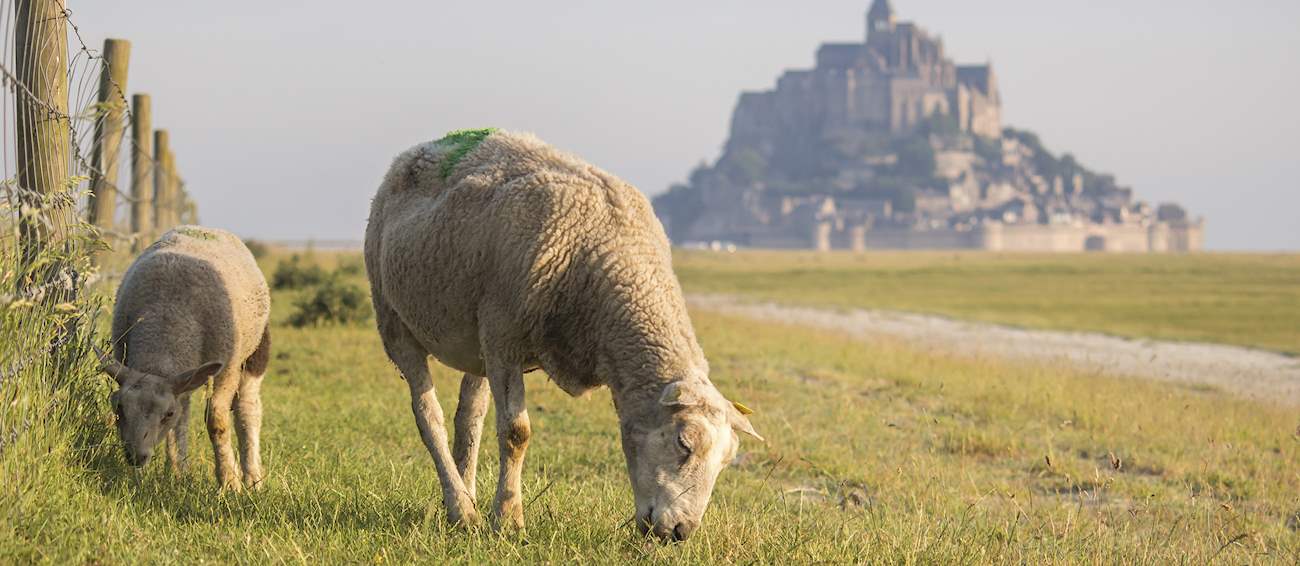TABLE OF CONTENTS
Best Norman Fresh Meat Types
Porc de Normandie is pork from the French regions of Eure, Seine-Maritime, Calvados, Orne and Manche that can be sold either as a whole carcass or cut in pieces. The pigs are reared in a sustainable way, with an outdoor area where each individual pig is given its own 50 square metres to live and feed.
The rearing of Normandy pigs dates back to the Middle Ages. In addition, at least 75 % of the pigs' diet must come from cereals, and they are slaughtered when they are at least 26 weeks old. Normandy pork is a common choice for top Parisian and Japanese chefs on festive occasions and is also a top choice for making charcuterie products from the meat, such as dried salamis.
Prés-salés du Mont-Saint-Michel is fresh meat from lambs slaughtered before they are 12 months old, born, reared and slaughtered in the French regions of Manche and Ille et Vilaine. This meat is unique due to the fact that the lambs feed on maritime pastures and seaweed from the salt marshes that are prevalent in the region.
As a result, the carcasses are slim, the fat is evenly spread, white and firm and the meat is pink, well marbled and juicy after it is cooked. When eaten, it results in a strong, long-lasting flavor that lingers in the mouth. The meat must mature on the bone for at least 4 days before being sold to consumers when it can be roasted or grilled and enjoyed with garlic sauce and potatoes.
Volailles de Normandie is poultry of different breeds and crossbreeds (Christmas turkeys, guinea hens, chickens, capons), slowly raised in the open air. It is produced in the French regions of Seine-Maritime, Eure, Calvados, Manche, and Orne, along with the neighboring cantons.
There is also a bare-neck breed of Forez, an ancient French breed of poultry. The method of poultry farming has been conducted in the region since the 19th century, when the meat was sold at important markets. The meat is sold fresh, as whole carcases or cut in sections, and the name of the breed must be clearly written on the package.
TasteAtlas food rankings are based on the ratings of the TasteAtlas audience, with a series of mechanisms that recognize real users and that ignore bot, nationalist or local patriotic ratings, and give additional value to the ratings of users that the system recognizes as knowledgeable. TasteAtlas Rankings should not be seen as the final global conclusion about food. Their purpose is to promote excellent local foods, instill pride in traditional dishes, and arouse curiosity about dishes you haven’t tried.




